- Home
- > Nature online
- > Life
- > Plants and fungi
- > Bee orchids and insect mimicry (video)
- > Orchid images
Primary navigation
- Life
- Mammals
- Birds
- Reptiles, amphibians and fishes
- Insects and spiders
- Other invertebrates
- Dinosaurs and other extinct creatures
- Plants and fungi
- Plant identification forum
- Urban fungi film
- Plants under pressure (video)
- Urban tree survey
- Big Seaweed Search
- Exploring British Wildlife: Bluebells
- Bee orchids and insect mimicry (video)
- Lichens
- Lichens and air pollution
- A guide to lichens on twigs
- Roots and Herbs - Exploring Jamaica's plant heritage
- Country cures
- Seeds of trade
- Trees: Magnificent structures
- A natural history of the potato family
- Plant mounting (video)
- Diatom specimens: Get up close
- Human evolution
Images of bee orchids, fly orchids and spider orchids
View some eye-catching orchids that have evolved to mimic insects. Their deception attracts particular insect pollinators to them.
Not only have the flowers of the orchids in the group Ophrys evolved to look like specific insect species, but they emit an enticing cocktail of chemicals. These mimic pheromones released by the female of the species and lure males to the flower.
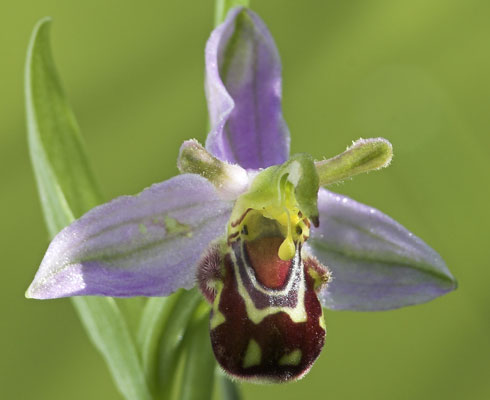
Bees trying to copulate with a bee orchid, Ophrys apifera, pick up pollen on their head from the hanging packets of pollen (pollinia). They then transfer this to the female parts of the next bee orchid they visit.
Despite this, bee orchids in Britain rely heavily on self-pollination. In contrast, the other Ophrys species are dependent on pollination by insects.

There are 4 species of Ophrys orchid in Britain. The bee orchid, Ophrys apifera, is by far the most common, but it occurs in many unusual forms with different colours, markings and flower shapes. These are under-recorded, so little is known about their distribution. We'd like your help to gather this information.
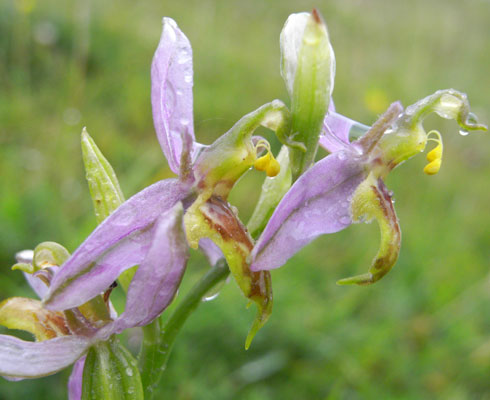
The many different forms of the bee orchid are usually regarded as varieties. This image shows Ophrys apifera var. trolli, known as the wasp orchid.
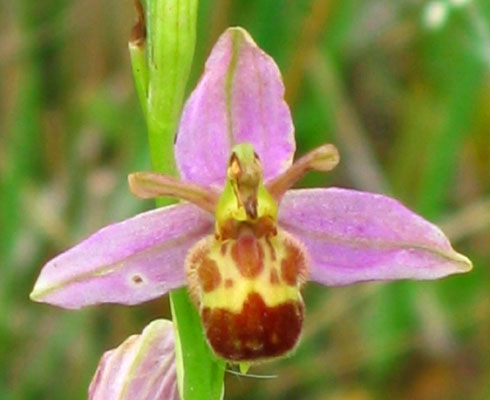
Ophrys apifera var. belgarum was only described in the late 1990s. It displays a different pattern of bands and colours compared to the common form of the bee orchid, and the shoulders of the lip are much less prominent.
© Dr HJ Crouch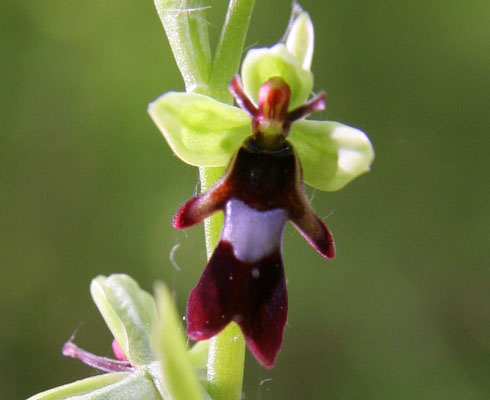
The fly orchid, Ophrys insectifera, was once widespread in the UK but it is now declining. It is most likely to be found in clearings and at the edge of woodland.

The bee orchid is known to cross breed with the fly orchid, resulting in the hybrid Ophrys x pietzchii, the bee-fly orchid.
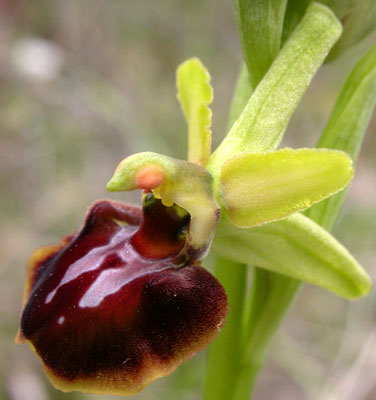
The early spider orchid, Ophrys sphegodes, was once present as far north as Cambridgeshire in the UK. But it is now largely restricted to Dorset, Sussex and Kent on the south coast.
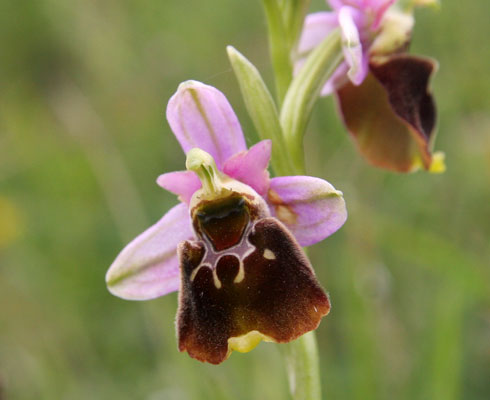
The late spider orchid, Ophrys fuciflora, is extremely rare in the UK. Very small populations exist at less than 10 sites in Kent.
Photograph wild orchids
Help us find out if climate change is affecting the UK's wild orchids.
Related information
External links
Toolbox
- Contact and enquiries
- Accessibility
- Site map
- Website terms of use
- © The Trustees of the Natural History Museum, London
- Information about cookies
- Mobile